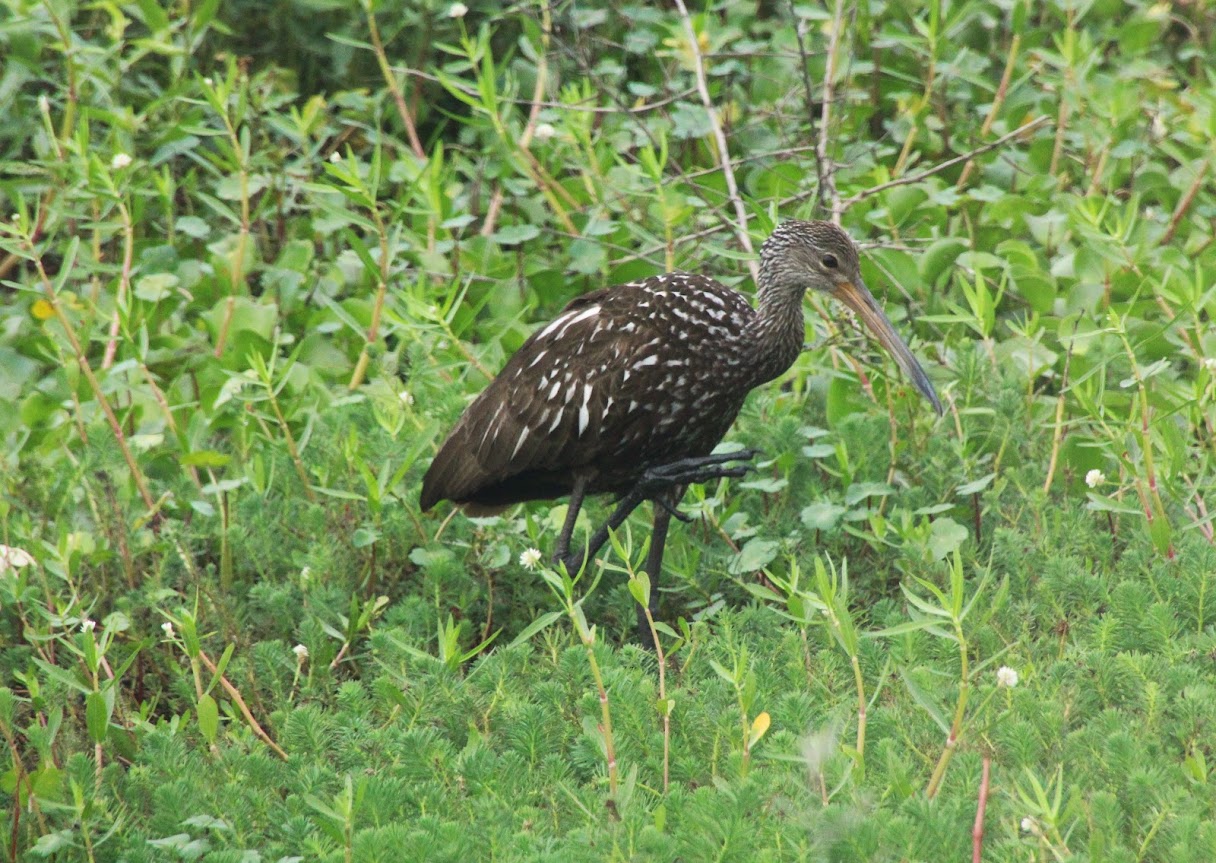This cooperative Bachman’s Sparrow was one of many highlights of the NJ Audubon Louisiana Cajun Country tour led by Scott Barnes and Dave Irons.
Our birding began in the vast Atchafalaya Swamp—filled with glowing Prothonotary Warblers and Mississippi Kites sweeping through the skies. Kentucky and Swainson’s Warblers sang from the thick woods and canebrakes among the never-ending sounds of Yellow-billed Cuckoo, White-eyed Vireo, Acadian Flycatcher, Hooded Warbler, and other songbirds. The Atchafalaya Swamp has some of the highest densities of neotropic songbirds in the U.S. Overhead we teased out soaring Anhingas and a pair of beautiful Swallow-tailed Kites from deep blue skies.
Louisiana’s rice country is sometimes referred to as “working wetlands,” teeming with teal, whistling-ducks, herons, and shorebirds. The seasonal switch from crawfish farming to rice farming coincides with spring migration, providing shallow water habitat for thousands of migratory birds. Seeing many species of shorebirds in breeding plumage is always a treat; among the 25 species recorded were American Golden-Plover, Hudsonian Godwit, and Wilson’s Phalarope.
We ventured north into the expansive pinewoods region of central Louisiana to see the trio of Red-cockaded Woodpecker, Brown-headed Nuthatch, and Bachman’s Sparrow—all prefer open loblolly pine forest, some of which is specifically managed for the federally endangered Red-cockaded Woodpecker. The entire range of these three species is restricted to the southeastern and south-central United States. We paused along a back road in Kisatchie National Forest to watch a building flock of Mississippi Kites—96 birds in total—as they hunted dragonflies on the wing.
Four hundred and seventeen species of birds have been found in Cameron Parish; there’s always something to see in the southwestern corner of Louisiana. We enjoyed a couple of King Rail families walking around in the open, posing for photos. In Holly Beach (aka “The Cajun Riviera”) we watched sleeping Common Nighthawks while four Yellow-headed Blackbirds and Bronzed Cowbirds were among more common blackbirds. Wilson’s Plovers were hiding in plain sight along the wrack-line of the beach and feeding tern flocks included Royal, Sandwich, and Black Terns.
After three days of strong southeasterly winds, a cool front rolled through overnight before our last day’s birding. Headwinds usually force trans-gulf migrants like flycatchers, vireos, warblers, tanagers, and orioles to feed and rest at the first available land and trees they reach. Peveto Woods is such a place and were found our best diversity of migrants there including a variety of warblers including locally scarce Cape May Warbler, plus numbers of Eastern Kingbirds, Scarlet and Summer Tanagers, Indigo and Painted Buntings. Scanning nearby fields, almost every flower had a Ruby-throated Hummingbird feeding at it.
Other interesting birds included Limpkin (they started nesting in the state a few years ago), Crested Caracara, Swainson’s Hawk, Scissor-tailed Flycatcher, and Cave Swallow—all of which are at the eastern edge of their range in southwest Louisiana. Birding the Gulf Coast in April is fantastic!
For more tours like this please check out our Eco Travel page for the latest trips
Tour report by Scott Barnes, NJ Audubon Senior Naturalist

















